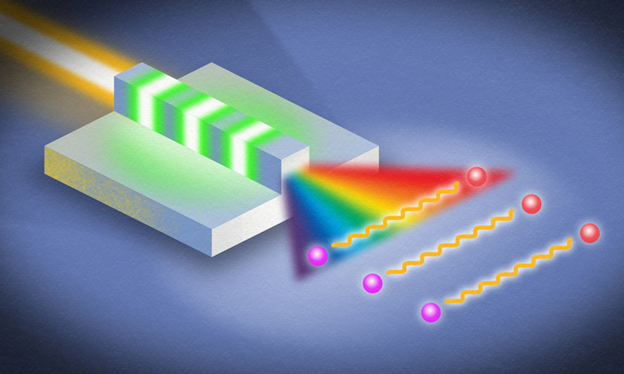
Ultrabroadband record set with entangled photons
Quantum entanglement, when two quantum particles connected to each other even over great distance, shows that one particle affects the other as if they were communicating. When entanglement involves photons, entangling the photons’ frequencies, bandwidth can be controlled.
Researchers at the University of Rochester are using this phenomenon to generate an incredibly large bandwidth with a thin film nanophotonic device. The breakthrough may lead to greater sensitivity and resolution for experiments in metrology and sensing, including spectroscopy, nonlinear microscopy, and quantum optical coherence tomography and higher dimensional encoding of information in quantum networks for information processing and communications.
The thin-film lithium niobate nanophotonic device uses a single waveguide with electrodes on both sides. The thin-film device has a thickness of 600 nanometers—more than a million times smaller in its cross-sectional area than a bulk crystal, making the propagation of light extremely sensitive to the dimensions of the waveguide.
The device is ready to be deployed in lab settings, but commercial use will require a more efficient and cost-effective fabrication process. While lithium niobate is an important material for light-based technologies, lithium niobate fabrication is still in its infancy.
Original Release: Eureka Alert
